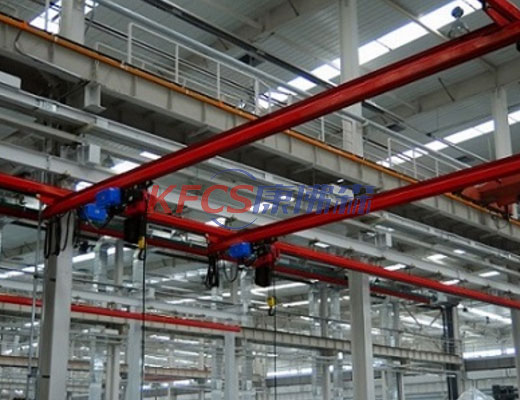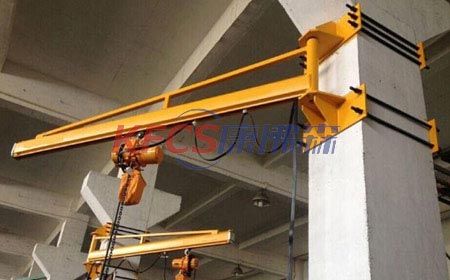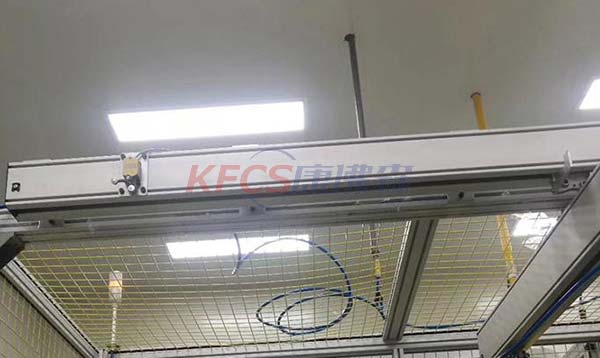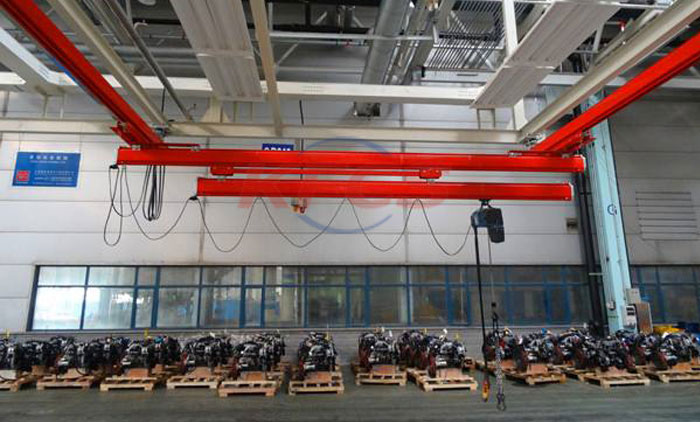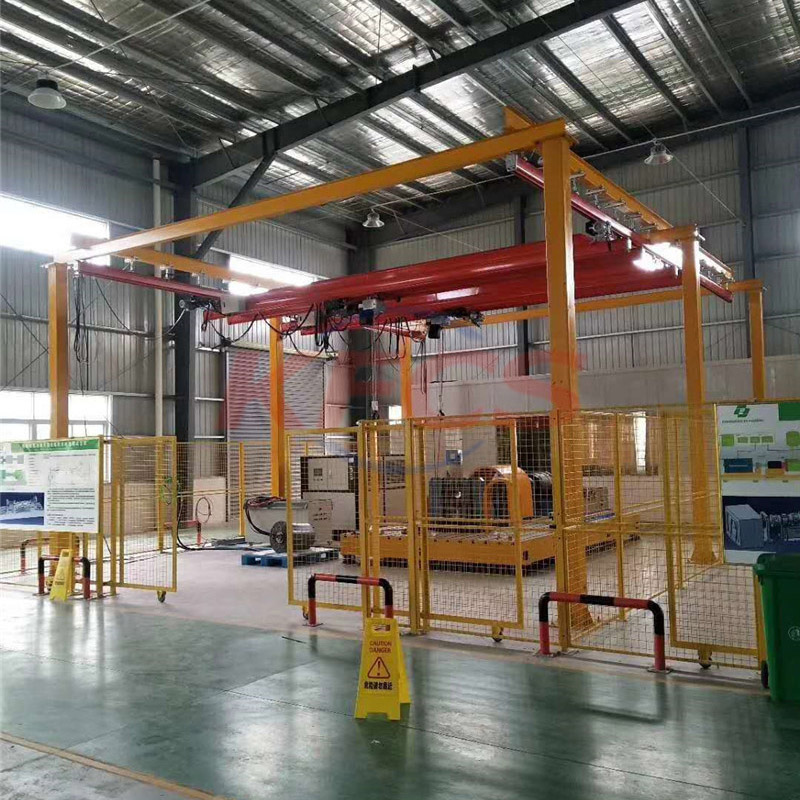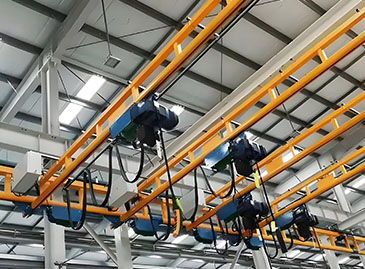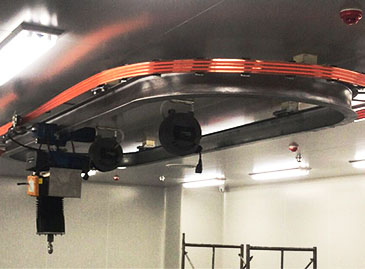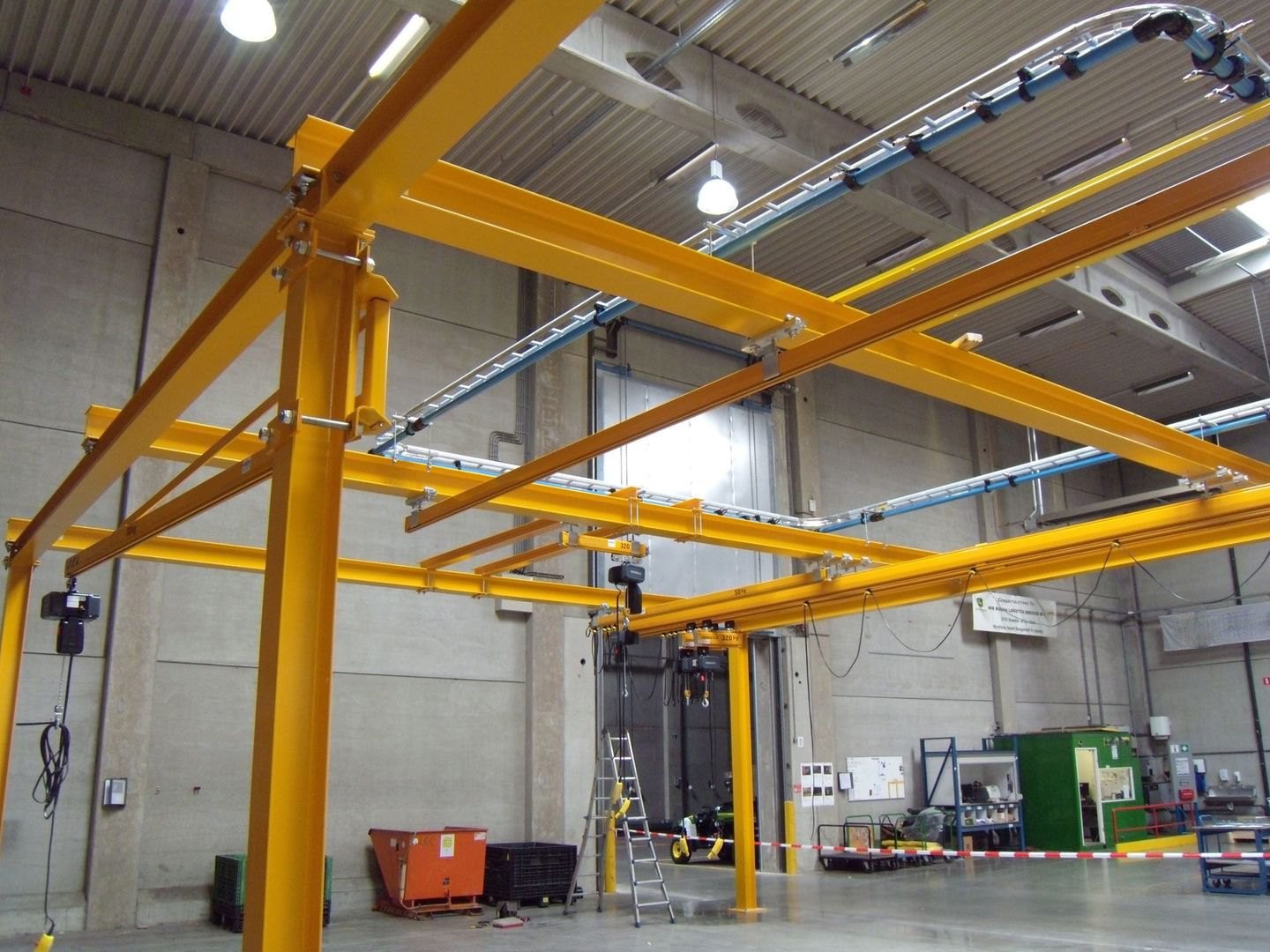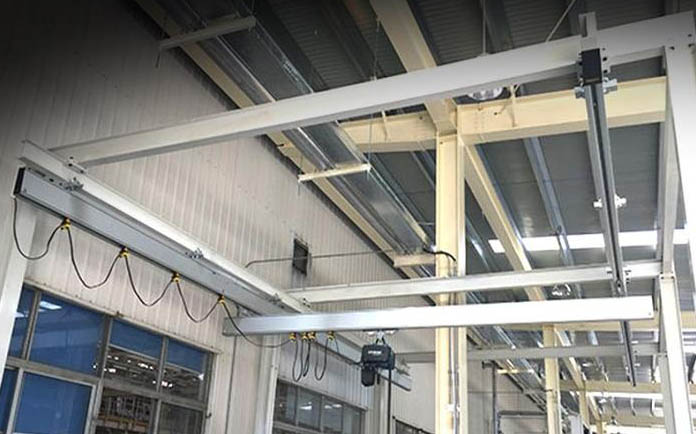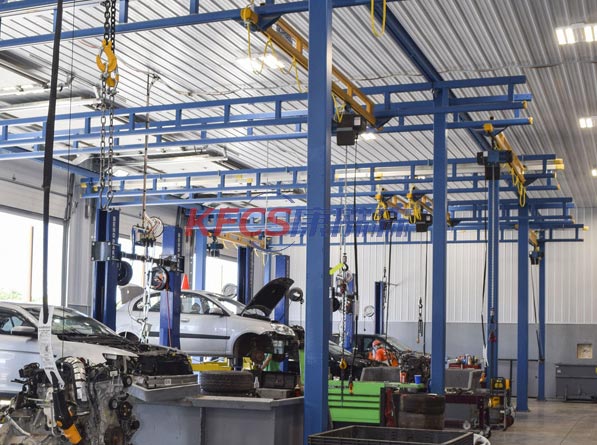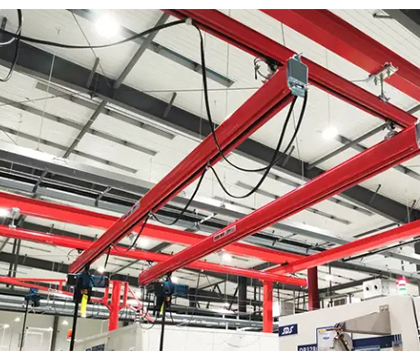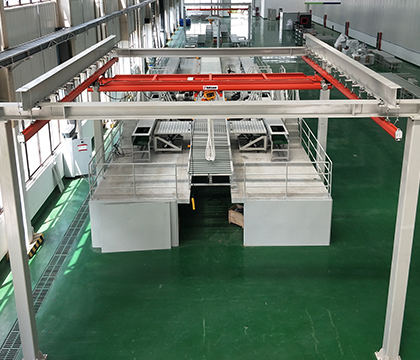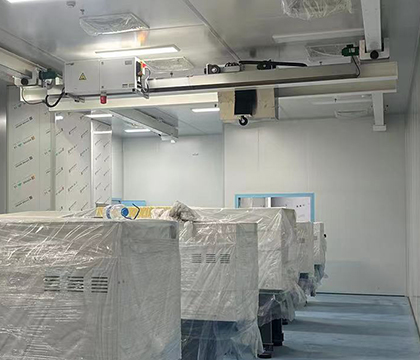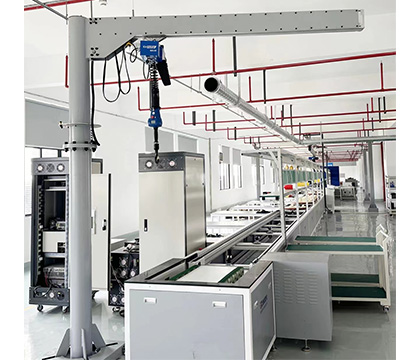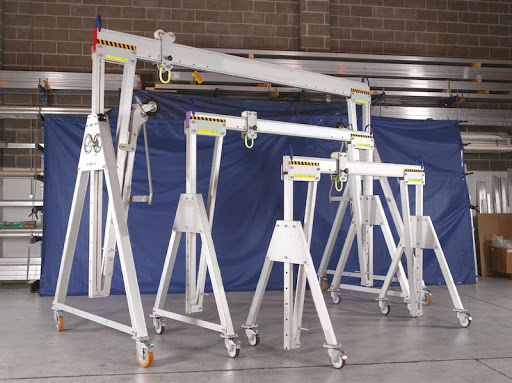“The KBK light crane system consists of lightweight components such as profiles, suspension tracks, and trolleys, which can be easily assembled and configured to create customized lifting solutions.”
The KBK light crane system is a versatile and modular overhead crane system that is commonly used in industrial settings. It consists of lightweight components such as profiles, suspension tracks, and trolleys, which can be easily assembled and configured to create customized lifting solutions.
The KBK light crane system offers flexibility in terms of load capacity, span length, and working area, making it suitable for various applications, including assembly lines, workstations, and warehouses. With its compact design, smooth operation, and ergonomic handling, the KBK light crane system provides efficient and safe lifting and handling of loads, maximizing productivity in industrial operations.
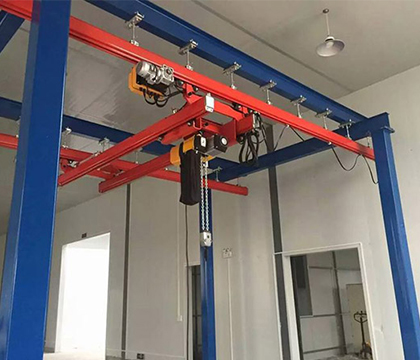
How to maintain KBK light crane track?
The KBK track needs significant maintenance after 400 hours of continuous use. The main maintenance include:
• Inspect the gears and reducer boxes within the reducer.
In the event of obvious wear on the gears, replacement is necessary. Additionally, when the reducer box has been in use for an extended period, it is expected that some grease will remain inside. As part of the maintenance process, it is essential to clean out the grease from the reducer box, followed by the replacement or replenishment of the gear oil.
• Inspect the track travel wheels
Once the travel wheels in the KBK light crane system have surpassed 400 hours of usage, there is a possibility of slight wear. It is crucial to examine the condition of the wheels at this stage. If the wheel shows only minor signs of wear, it can continue to be utilized without issue. However, if the wear is severe enough to impede normal operation, immediate replacement is necessary. Additionally, it is essential to regularly inspect the lubricating oil levels of the wheels and promptly replenish if needed.
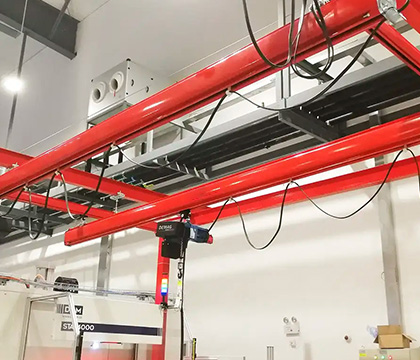
• Inspect track condition
During significant maintenance, it is important to assess the track's general condition, including checking for any deviations or abnormalities. If there is an asymmetry indicating possible deformation, it should be addressed through replacement or correction. Additionally, inspect the KBK track's surface for cracks or any other irregularities. If such damage is present, replacement is necessary for maintenance purposes.
In addition, daily maintenance is of utmost importance. For instance, once the track has been in continuous operation for more than 200 hours, it requires daily inspections. These inspections involve checking the track's surface for cracks or fissures, as well as verifying the proper functioning of the brakes and bearings in the KBK light crane system. Typically, these inspections primarily rely on visual inspection.

